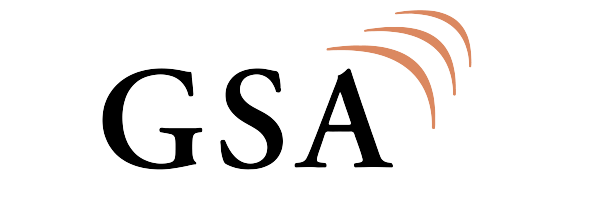-
5G - C-Band for 5G: 3300-4200 MHz: Executive Summary
-
-

C-Band for 5G: 3300-4200 MHz: Executive Summary
The full report with a complete picture of the C-Band Spectrum is available for GSA Members and Associates.
3300-4200 MHz:
A KEY FREQUENCY BAND FOR 5GHow administrations can exploit its potential.
As part of the GSA vision for spectrum from low, mid and high band frequency ranges 2020.
The GSA White Paper addresses the importance of 3300–4200 MHz spectrum range for 5G networks and the societal benefits that follow from early and widespread deployment of 5G in this range. It is intended to help national administrations and policymakers who are considering this frequency range for IMT identification – as well as those who have decided in its favour and are currently engaged in designing appropriate regulatory frameworks and assignment procedures – make informed decisions.
The White Paper updates the June 2017 GSA White Paper titled, The Future of IMT in the 3300–4200 MHz Frequency Range, highlighting the increasing maturity of the 5G global ecosystem in this frequency range. The paper provides the current status of 5G deployment across the world in this frequency range and details 5G’s standards readiness, new and developing use cases, and current technology enhancements that portend greater efficiencies for industries, richer user experiences as well as the creation of ‘smart’ societies.
On the policy and regulatory side, the paper identifies the key ITU-R decisions facilitating the identification of this spectrum for IMT and its use for 5G. It also addresses a wide set of policy and regulatory issues, ranging from those pertaining to cross-border coordination, spectrum sharing/clearing and spectrum caps to those pertaining to frequency arrangements, channelisation schemes and national synchronisation frameworks.
The paper emphasises that national administrations seeking to secure the many and varied benefits of 5G for their policies must also provide wide and contiguous channel assignments to operators while simultaneously considering investment-friendly provisions and connectivity requirements of industry verticals.
The executive summary provides the principle highlights of the paper and may be read as a preview of the issues detailed in the paper.
EXECUTIVE SUMMARY
C-Band for 5G
The 5G ecosystem – of chipsets, network equipment and handsets as well as other end-user devices – has developed at an unprecedented speed, maturing within a year of the first 3GPP standards release of 5G-NR (in the case of LTE, the corresponding time was roughly three years!). Network equipment, smartphones, customer premises equipment and other types of end-user equipment utilising 5G NR are now available in various markets in different spectrum bands, all of which add support for 5G in various parts of the 3300–4200 MHz range, if not the entire range – that is, for 3GPP bands n77 (3300–4200 MHz) and n78 (3300–3800 MHz).
There are nearly 140 operators currently investing in 5G networks in the 3300–4200 MHz range globally: 43 of them are deploying, have deployed, or have launched 5G networks using this spectrum.
This section summarises GSA’s key messages articulated in this White Paper with respect to the importance and the use of the 3300–4200 MHz range for the early and widespread deployment of 5G.
©2020 GSA
-
Related Reports
-
 Read more
Read moreC-Band Spectrum Auctions – January 2020
C-Band Spectrum auctions/allocation trends Prepared by GSA based on data from the GSA 5G Spectrum Auction Tracker. Since 2015 GSA…
-
-
C-Band Spectrum for 5G – October 2019
C-Band Spectrum has been licensed to 64 operators for 5G C-Band Spectrum (n77, n78: 3.3-4.2 GHz) is used for LTE…
Read more
-
-
 Read more
Read moreSPECTRUM: Use of C-Band (3400/3600-4200 MHz) for Mobile Broadband in Hungary, Italy, Sweden & UK
June 19, 2015 – [1.9 MB] Use of C-Band (3400/3600-4200 MHz) for mobile broadband in Hungary, Italy, Sweden and the…
-
